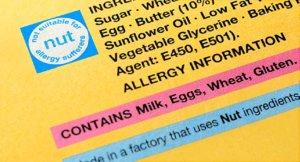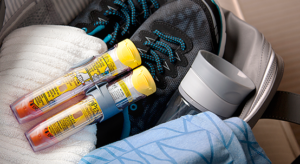
Mysterious Illness
Do you feel sick and can’t figure out why? It might be a food allergy that’s causing your bloated stomach pain or mysterious rash. If it’s persistent and not getting better, there can be an underlying problem like food allergies. When you eat an ingredient you’re allergic to, the immune system overreacts and can cause potentially severe or life threatening symptoms. The Centers for Disease Control and Prevention says food allergies are a growing food safety and public health concern, affecting four to six percent of American children. You can develop food allergies at any age.
Food Allergy Awareness
Right now is a peak time for allergy and asthma sufferers. When you eat a food you’re allergic to, the body’s cells release histamine chemicals. Then the intestinal defense mechanism is breached, and your digestive system doesn’t break down the food and stomach acids properly, absorbing the antigen straight into your system and crossing the gut-blood barrier. Your intestinal tract becomes inflamed. You may also be compromised by a viral or bacterial infection.
 Symptoms to Watch Out For
Symptoms to Watch Out For
Food allergy symptoms vary from itching and swelling in the mouth, skin rash, hives, vomiting, wheezing, trouble breathing, fatigue, diarrhea and gastro-intestinal problems. The allergic reaction can also make your blood pressure drop and affect your heart, eyes, and brain. Kidswithfoodallergies.org finds the most common food allergies for children are eggs, milk, soy, wheat, peanuts and tree nuts like cashews, walnuts, pistachios, and chestnuts.
It is also important to be aware of Gluten issues. It not only causes Celiac disease, but can also manifest in a less severe form (gluten intolerance) that can cause diarrhea, constipation, or bloating.
Test for Food Allergies
There is no cure for food allergies. The best advice is to avoid the food or spice, giving you problems. If you don’t know which ingredient is making you sick, you can come to Johnson Medical Associates for testing. A blood test can measure your immune system’s response to certain foods by measuring the allergy related antibody, immunoglobulin E. The doctor will check for an immediate response and a delayed reaction. Skin intradermal testing can also work. A small amount of the suspected allergen is injected into your arm, and the amount of reaction is recorded. Try eliminating certain foods for a week and then add the foods back into your diet one at a time. The doctor will also look at your symptoms, family allergy history and a physical examination.
Immunotherapy Treatment Option
At Johnson Medical Associates, you can get a digestive enzyme analysis. An oral immunotherapy treatment has you consume tiny drops or powder of the trigger food, controlled by Dr. Johnson. Then he slowly increases doses at intervals, and the immune system eventually becomes desensitized, learning to react less strongly to the food allergen. Most patients have to continue treatments to build up their tolerance. Research from the National Institutes of Health shows encouraging results and tremendous progress over the last decade with food immunotherapy to treat child patients and desensitize them.
Treatment depends on the individual. You can heal the gut with nutrient replacement and the right supplements to correct the bad bacteria. Hyperbaric oxygen treatment can help heal inflammation in your digestive tract from Crohn’s Disease and colon inflammation from Colitis. Patients suffering from irritable bowel syndrome can also benefit from hyperbaric oxygen treatment.
Living with Food Allergies
If you have a young child and are concerned they’ll be exposed to a food allergen in the school cafeteria, at an after school program or at a friend’s home, you should have an emergency plan. Anaphylaxis is a severe allergic reaction that can come on rapidly with a swollen airway and even cause death. Quick actions are crucial to prevent a severe health problem or even death. The child can take one bite and end up in the ER. Sometimes anaphylactic symptoms can start out mild and become stronger an hour later. In that case, a doctor needs to be monitoring the child.
Accidental exposure can happen. It’s a good idea to educate class members on the food allergy and what needs to be done if an accident happens. You can also make a laminated chef card listing all food allergens and synonyms for the student to show the cafeteria chef. You must read labels when shopping and beware of ingredients.

LABELS 101
The Food Safety Modernization Act has increased importance on controlling major food allergens and making sure labels are not confusing. It’s important to recognize different terms for the same type of food because a dairy or peanut allergy can be deadly. For example, manufacturers can use synonyms for milk like whey for the watery part of milk. You should also look out for these words on labels: “may contain,” “manufactured in shared facility” and “processed on the same equipment.”
 Act Quickly
Act Quickly
Even a trace amount of a food allergen can be life threatening. You should have two EpiPens ready at all times to give you epinephrine. While waiting for the ambulance to come, give yourself an Epi-Pen shot, and have the second EpiPen ready for someone else to administer the shot, in case the ambulance takes too long. Then, you can take an antihistamine and use an albuterol inhaler if you still have breathing problems.



